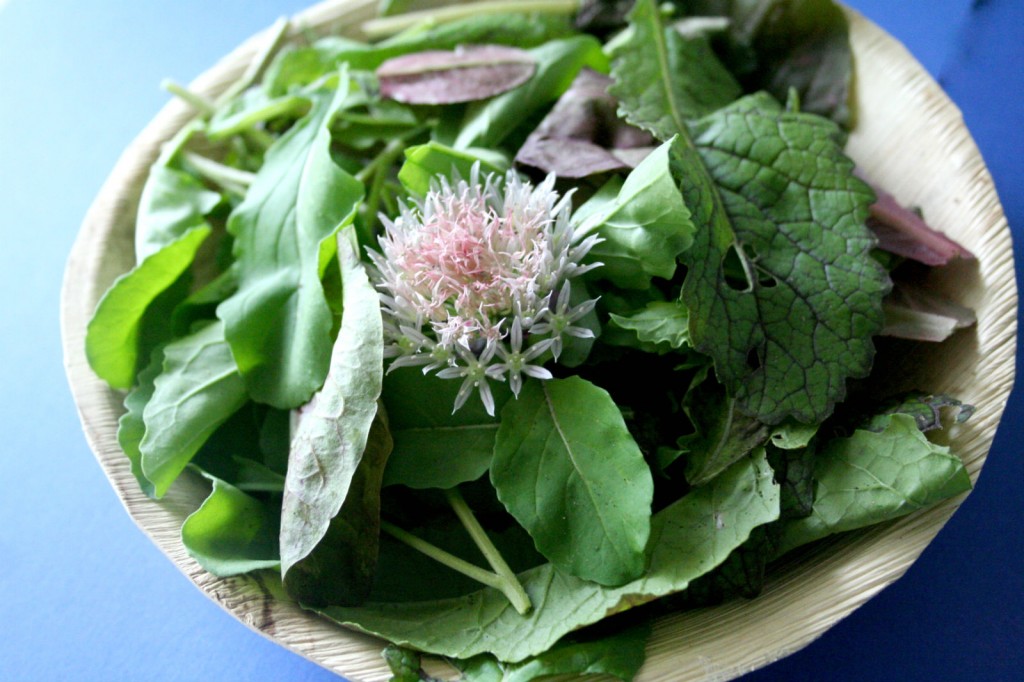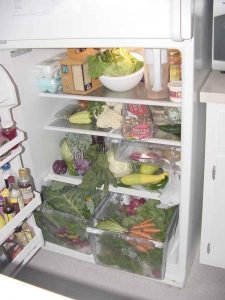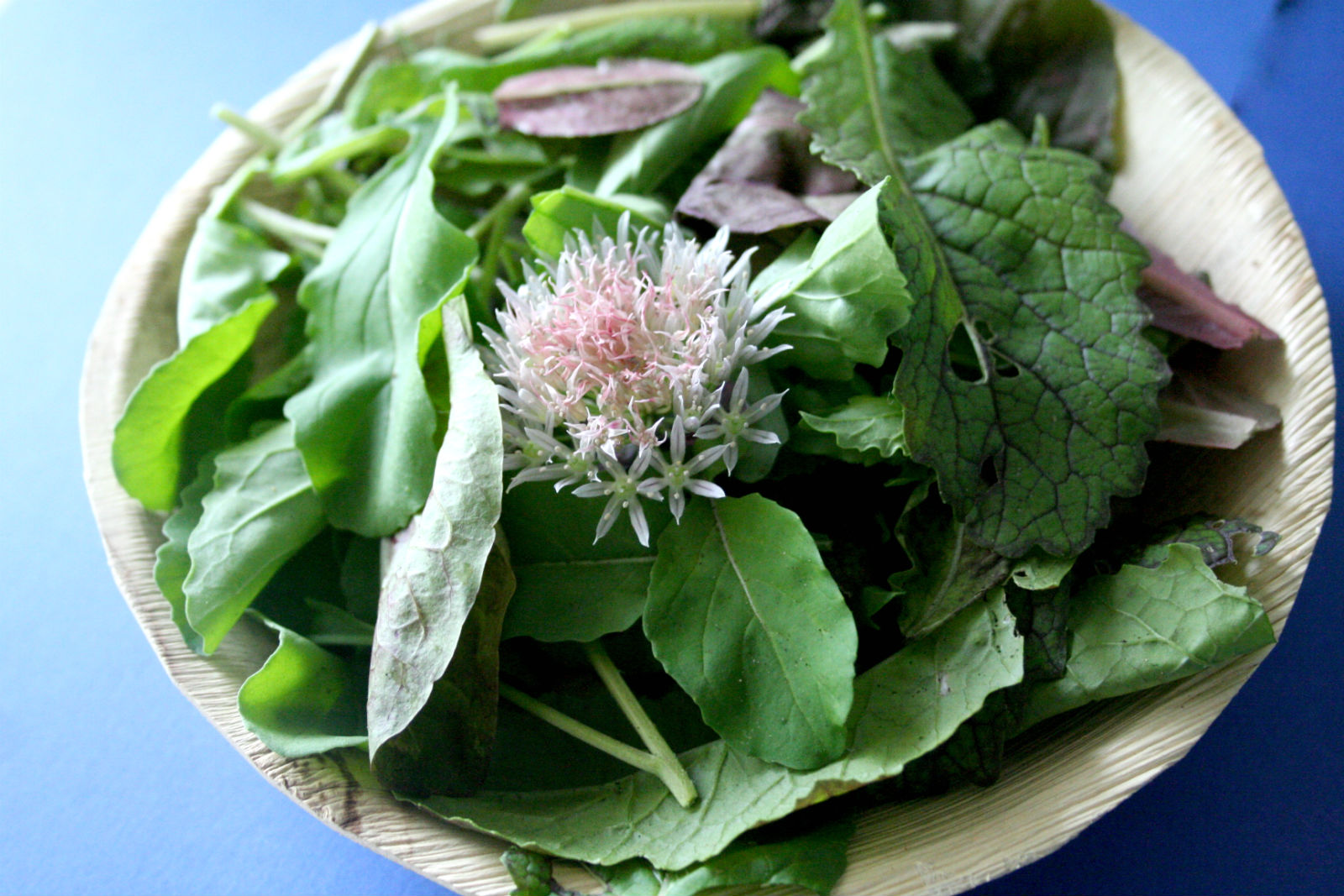
CSA, or Community Supported Agriculture, is a system where you buy for a share at the beginning of the year, and then during the growing season you get 1-2 bags of fresh vegetables from the farm. While many CSAs have already started, those of us in Michigan have another month to go. So what should one do in the meantime, while anxiously awaiting that first pickup?
1. Buy or create a planner.
Write the pickup days on it, as well as any planned vacations / events. Yes, you can just put it in your electronic calendar, but it’s not as fun!
2. Write down what you’ll get from your CSA each month.
For each month, write down that you plan to get from your CSA. Most will provide you with a tentative list. For example, this is what my former CSA, Trillium Haven Farm, offered:
| June | July | August |
| Lettuce Mixed Greens Spinach Radishes Chinese Cabbage U-Pick: Shelling Peas, Snap Peas |
Lettuce Mixed Greens Radicchio Swiss Chard Broccoli Kohlrabi Carrots Beets Radishes Eggplant Sweet Peppers Cucumbers Zucchini Summer Squash Scallions Early Tomatoes Basil U-Pick: Green Beans, Yellow Beans |
Lettuce Mixed Greens Kale Swiss Chard Broccoli Beets Heirloom Tomatoes Plum Tomatoes Eggplant Sweet Peppers Hot Peppers Cucumbers Scallions Musk Melon Watermelon Basil U-Pick: Cherry Tomatoes, Sorrel, Parsley, Thyme, Oregano, Rosemary, Dill, Chervil |
| September | October |
| Lettuce Mixed Greens Kale Swiss Chard Broccoli Beets Tomatoes Eggplant Peppers Radishes Celery Leeks Basil Red Onions Red Potatoes Summer Squash Zucchini |
Lettuce Mixed Greens Kale Swiss Chard Spinach Radishes Beets Cauliflower Broccoli Kohlrabi Celeriac Leeks Parsnips Turnips Potatoes Yellow Onions Collards Pumpkins Peppers Brussels Sprouts Rutabaga |
Keep in mind, the list you get from your CSA is only an estimate. The season might be late or early or there could be a disaster that wipes out one of the vegetables. But that will give you a general idea of what to expect.
 3. Find a list of what’s in season in your area.
3. Find a list of what’s in season in your area.
Many farmers’ market websites or your local extension office will have this available. What I like to do is take the list and go through with a highlighter and indicate what I’ll be getting from my CSA. There’s also a nifty site called Eat the Seasons.
4. Make a list of what you want, but won’t be getting from your CSA.
Then, I take a look at the list and see what I won’t be getting from my CSA. For example, I notice that asparagus and rhubarb aren’t on the CSA list. From my farmer’s market website, I notice that they are normally available in May. Therefore, if I want rhubarb or asparagus, I’ll need to find an alternate source. This can be from the farmer’s market, local growers, or I can try to grow it myself. While you’re researching those options, also ask yourself where you’ll get “extras” for canning or freezing, if you plan to do that. Or perhaps you could consider learning how to extend the season by planting early or late using hoop houses, mini greenhouses, etc.
5. Decide if you will be canning or preserving food for the winter.
Now would be a good time to research canning methods. Two books I highly recommend are the Ball Blue Book of Preserving and The Busy Person’s Guide to Preserving Food: Easy Step-by-Step Instructions for Freezing, Drying, and Canning.
6. Research and file recipes.
Consider starting a file and organize them by vegetable or season. The one book that almost everyone recommends is From Asparagus to Zucchini: A Guide to Cooking Farm-Fresh Seasonal Produce. It will become your handbook of sorts, as each vegetable is listed alphabetically and includes a line drawing, storage and cooking tips, and several recipes. You’ll be referring to these books almost weekly once the vegetables start coming. It’s good to have an idea of what’s in them before you find yourself standing in the kitchen with a huge pile of veggies.
7. Get to Know your neighbors.
After you’ve determined some sort of plan for how you’d like to use your vegetables, you’ll want to find some unsuspecting neighbors to dump consider how you’re going to get rid of your extras. Some CSAs have a box at their pickup site where you can put things you know you won’t use and it’s taken to a local charity. Otherwise, you may want to find a friend or two who like vegetables and wouldn’t mind taking extras off your hands.
8. Learn how to compost.
Speaking of extras, it’s inevitable that you’ll forget about something in the back of the refrigerator. Or fully intend to eat everything, but life gets in the way and you find yourself with vegetables that are past their prime. Never fear, don’t feel guilty. Just compost! It’s a good idea to think about composting before the season begins. Google it or try this site.
9. Make (or buy) reusable bags.
One more thing to do before the season begins is to purchase or make reusable bags. Picking up your produce in grocery store plastic bags is generally frowned upon. Search the internet and you’ll find lots of easy patterns. One of my favorite ideas is to take an old t shirt, cut off the sleeves, and sew the bottom closed. Voila! A reusable bag!
10. Clean out your refrigerator.
Take this opportunity to clean out your refrigerator and freezer. You’ll want to start with a clean slate before you start shoving veggies into every nook and cranny. (As seen in the photo at the beginning of this post, which was taken the first year I participated in a CSA).
Words of Wisdom:
“One of the things I have found over the years is that you never know what there is going to be an abundance of. The first year it’s easy to think you will get equal amounts of “normal” vegetables each week in a predictable manner. However, that is not the case! If you embrace the unpredictability it can actually make it more fun; if you don’t it can be overwhelming and stressful. What a blessing this year to have an abundance of lettuce and carrots! Other years it’s been tomatoes, squash, etc…Each year we create unique memories of that season. We actually remember what we ate and can reminisce about it! We have a much broader appreciation of food & farming then we did when we started. If everything happened according to ‘plan’, we wouldn’t have all of these great memories.”
– Rachel Zylstra, a member of Trillium Haven Farm CSA.



Wow. Such great advice…who knew there was so much to do! But I can see how this would make it much more worthwhile. I’m always afraid I’ll get some crazy amount of veggies that I won’t eat. I need to take the plunge! 🙂
.-= oh amanda´s last blog ..Top Ten {Tuesday}: World Vision in the Domincan Republic =-.
Remember a couple of years ago when the eggplant was in abundance? I was fixing eggplant every which way! Fortunately it is one of my all time favorites! Just made some Baba Ganoush yesterday!
I am so looking forward to June when we get our 1st pick-up! It’s like homecoming!
This is awesome! I am excited about my wife and I’s first year with a trillium farm share! I will keep these things in mind.
also know what not to put in your fridge – we do not put any fruit/veg in there as they will get lost and die 🙁
after we go through what we need then we share, we call the food banks see if they need anything- anything after that gets canned or into the
freezer 🙂
I have been considering joining a CSA, but I also love going to the farmers markets. Especially since there is one within walking distance to my house 🙂 Either way, these tips are very useful. I’m going to check out the cookbook.
Thank you! Loving your blog!